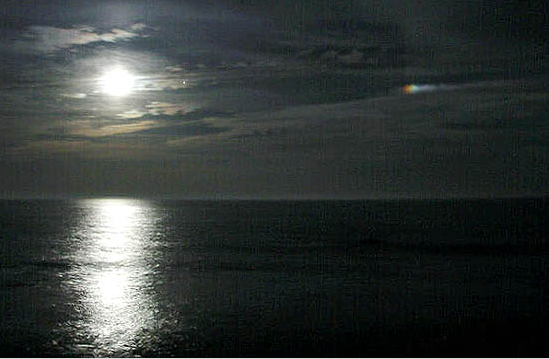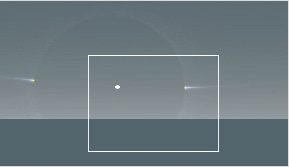Moon dogs - Long Island
Moon Dogs - A Phenomenon on Long Island
Moon dogs, also known as lunar halos, are a captivating atmospheric phenomenon that can be observed in various parts of the world, including Long Island. These mesmerizing optical illusions occur when light from the moon or sun is refracted and reflected by ice crystals suspended in the Earth's atmosphere. While the original article provides a glimpse into this phenomenon, let's delve deeper into the intriguing world of moon dogs on Long Island.
Understanding Moon Dogs
Moon dogs appear as bright, circular spots of light that surround the moon or sun. These luminous rings are caused by the refraction and reflection of light as it passes through hexagonal ice crystals present in high-level cirrus clouds. When the light enters the crystal and exits at a specific angle, it undergoes dispersion, resulting in the separation of colors. However, lunar halos typically appear colorless to the naked eye due to their dim light, which fails to activate our color receptors.
The Camera Lens Effect
In the second image provided, it may seem puzzling that the moon dog is positioned below the moon. However, this is merely a projection effect caused by the camera lens. In reality, moon dogs, or parhelia, are always at the same altitude as the sun or moon. The camera lens can distort the appearance of celestial objects, leading to intriguing visual anomalies like the one captured in the photograph.
Optimal Viewing Conditions
To witness moon dogs on Long Island or any other location, several factors need to align. First and foremost, there must be cirrus clouds present in the upper atmosphere. These wispy clouds are composed of ice crystals, which are essential for the formation of moon dogs. Additionally, the moon or sun must be at a relatively low elevation angle, typically less than 45 degrees. This positioning allows for a more significant portion of light to pass through the ice crystals, increasing the chances of observing this captivating phenomenon.
Capturing Moon Dogs
Photographing moon dogs can be a rewarding experience for amateur and professional photographers alike. To capture these ethereal rings of light, it is essential to use a camera with manual settings to control exposure and focus. A wide-angle lens is often preferred to capture the full extent of the moon dog. Additionally, adjusting the white balance can help emphasize the colors within the halo, which may be faintly visible in photographs but often go unnoticed by the naked eye.
The Role of Long Island's Geography
Long Island's unique geography contributes to the prevalence of moon dogs in the region. Surrounded by the Atlantic Ocean, Long Island experiences a maritime climate, characterized by cool summers and relatively mild winters. These weather conditions create an ideal environment for the formation of cirrus clouds, which are crucial for moon dog occurrences. Furthermore, Long Island's relatively flat terrain provides unobstructed views of the sky, allowing for optimal visibility of atmospheric phenomena such as moon dogs.
Celestial Synchronicity
The appearance of moon dogs on Long Island is not limited to specific times of the year. However, certain celestial events can enhance the chances of observing this phenomenon. During a full moon, when the moon is at its brightest and highest point in the sky, moon dogs become more prominent. Additionally, when Mars aligns with the moon, as depicted in one of the images provided, it adds an extra element of intrigue to the spectacle.
In conclusion, moon dogs are a captivating atmospheric optics phenomenon that can be observed on Long Island and various other locations around the world. Understanding the science behind their formation, along with optimal viewing conditions and photography techniques, can enhance the experience of witnessing these ethereal rings of light. So, keep an eye on the sky, and you might just be lucky enough to catch a glimpse of this mesmerizing celestial display on Long Island.

Moon Dog and Mars over the Atlantic Ocean. The moon was full and 10� high when Martin Turner of Putnam Valley, New York captured this image on 6th June 2001 at Montauk Point, Long Island. Mars is to the right of the moon. The moon dog is brightly coloured but lunar halos usually appear colourless to the naked eye because their light is too dim to activate its colour receptors. Look for moon halos when it is near to full.Image �2001 MartinTurner, used with permission

The photograph shows the moon dog below the moon! This is purely a projection effect of the camera lens as the simulation shows. Parhelia are always at the same altitude as the sun or moon.
Note: this article has been automatically converted from the old site and may not appear as intended. You can find the original article here.
Reference Atmospheric Optics
If you use any of the definitions, information, or data presented on Atmospheric Optics, please copy the link or reference below to properly credit us as the reference source. Thank you!
-
<a href="https://atoptics.co.uk/blog/moon-dogs-long-island/">Moon dogs - Long Island</a>
-
"Moon dogs - Long Island". Atmospheric Optics. Accessed on November 26, 2024. https://atoptics.co.uk/blog/moon-dogs-long-island/.
-
"Moon dogs - Long Island". Atmospheric Optics, https://atoptics.co.uk/blog/moon-dogs-long-island/. Accessed 26 November, 2024
-
Moon dogs - Long Island. Atmospheric Optics. Retrieved from https://atoptics.co.uk/blog/moon-dogs-long-island/.